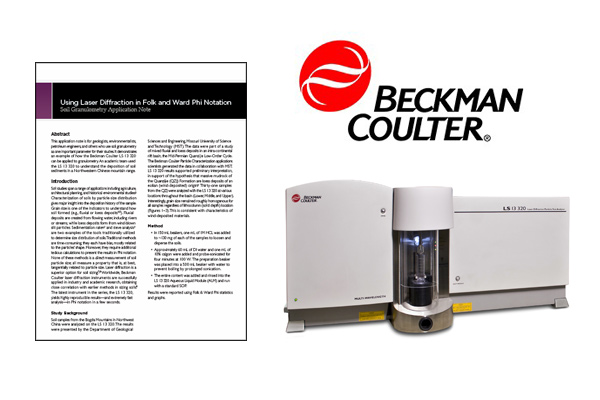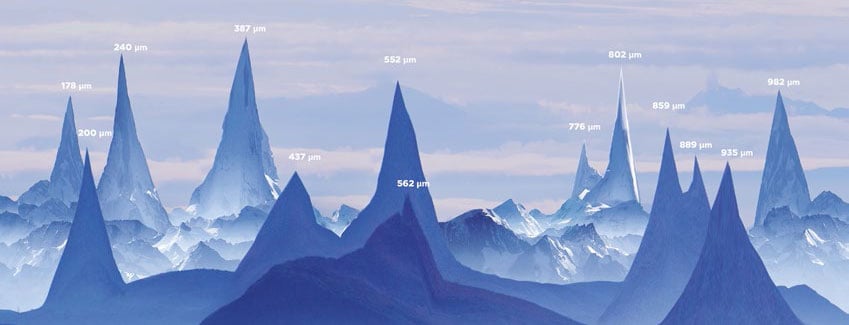

LS13 320 software can also calculate descriptive statistics such as mean, median, skewness and curtosis. The percentage of particles in various size ranges is determined and data can be displayed as a particle size distribution, or cumulative size distribution (Figure 2). Care must be taken to add sufficient H2O2 to remove the majority of the organic material, but not to remove other material. The H2O2 method also has drawbacks, primarily that H2O2 will not specifically attack organic matter but will also remove carbonates.

While ignition is a rapid method of removing organic material, loss of structural water from clays may result in changes in the size of these particles. Organic matter can be removed through ignition or through wet oxidation using H2O2. The Beckman Coulter LS13 320 Laser Diffraction Particle Size Analyser in the Physical Geography Laboratories Prior to sample analysis, organic matter is traditionally removed, although there is no necessity for this with this instrument. In contrast, the second profile shows very consistent particle size distributions. In fact, this coarse zone represents an inwash of peaty material following heavy rainfall in the autumn of 1959. This can be explained by unusual weather conditions: a very dry summer followed by severe storms. In the first core, sediment between 18 and 28 cm depth is relatively coarse. Figure 4 shows how particle size distributions changes with depth in sediment cores taken from 2 reservoirs. This demonstrates the importance of ensuring representative samples are input to the LS13 320 Laura Shotbolt has used particle size analysis to identify changes in the type and source of sediments deposited in reservoirs. Fifteen separate subsample inputs show lower, although acceptable precision over much of the distribution.

The lower precision at the tails of the distribution are primarily due to smaller amounts of material in these fractions. RSDs are only above 3% where sediment is less than 0.28 mm or above 177 mm. One sample repeatedly injected into the LS13 320 shows very good precision. Two assessments of precision have been made: Figure 3 shows the particle size distribution of an estuarine sediment sample. One of the key challenges in particle size analysis is to obtain precise, reproducible results.Laser diffraction is a particularly appropriate technique for analysis of environmental samples because it covers a wide range of particle sizes (the LS13 320 operates from 0.04 to approximately 2000 m). Other methods work out particle size based on their capacity to pass through sieves or by their settling rate in water. It utilises the diffraction of light by particles in suspension to determine the particle size distribution. Particle Size Analysis using a Beckman Coulter LS13 320 Precision of Laser Diffraction PSA Particle Size Analysis Examples of research using laser diffraction particle size analysis Laser diffraction is one of a number of methods for analysing the particle size of soil and sediment samples.


 0 kommentar(er)
0 kommentar(er)
